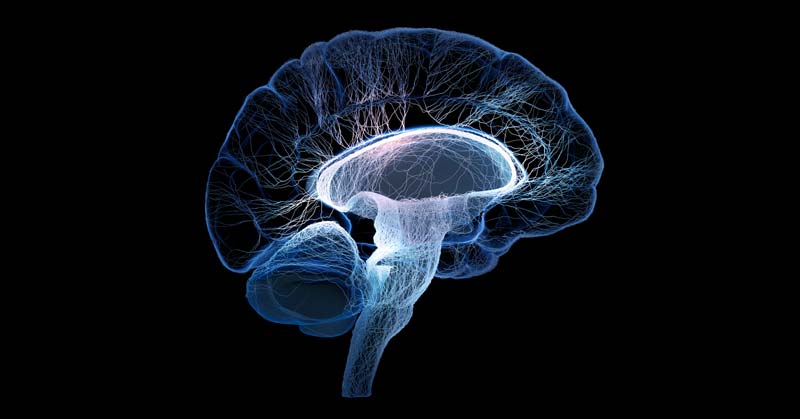
In the last minute of Super Bowl XLIX, the Seahawks were down by four and had the ball at the Patriots’ 1-yard line. Seahawks player Ricardo Lockette should have received the ball, but Patriots cornerback Malcolm Butler intercepted the pass from quarterback Russell Wilson, resulting in the Patriots winning the game, 28-24.
Does this make you wonder where an athlete’s catch originates, from the body or the brain? Lockette’s intention may have been there, but not the sharpness needed to physically execute the “challenge” received by the brain.
Is reaction time coachable or trainable? How much an athlete’s efficacy—and the amount they can control—contributes to neuromuscular performance is unknown. Remove processing factors and improving maximizing an athlete’s reaction time may depend on sustaining physiology—using nutrition to enhance neuronal speed.
In this article, I’ll discuss the omega-3 that strengthens the brain and powers the mind, docosahexaenoic acid (DHA), a nutrient that most athletes are deficient in. DHA supplementation is in the best interest of all athletes as an ergogenic aid for the brain and eyes to enhance acute performance. It can also help support long-term health, especially for athletes suffering from the silent concussion epidemic.
Omega-3 Polyunsaturated Fatty Acids
Omega-3 polyunsaturated fatty acids (PUFAs) are essential fatty acids critical for cardiovascular health (and for fighting inflammation) that must be obtained from the diet.
The key omega-3s are:
- Docosahexaenoic Acid (DHA): A long-chain omega-3 critical for the development and function of the brain and eyes throughout life. Every cell in the body contains DHA, and it is the main omega-3 in the eyes (93%) and brain (97%). DHA is most concentrated in brain cell (i.e., neuron) membranes, specifically where signaling occurs at the gap between two neurons (i.e., the synapse), and in the parts of the brain involved in memory and attention.
- Eicosapentaenoic Acid (EPA): A long-chain omega-3 critical for overall health.
- Alpha-Linolenic Acid (ALA): A short-chain omega-3 (found in plant-based sources) that is a building block for DHA and EPA, and an energy source. ALA converts to EPA (8%) and then DHA (0-4%). This conversion is not sufficient for optimal performance or health; and especially not enough to increase DHA in the brain. Therefore, we need to directly increase our DHA intake.
The Basics of DHA
We know that we need an appropriate supply of carbohydrates for energy, but we forget about an adequate supply of DHA for brain function. DHA is a building block for daily cognitive behavior and function.1 DHA supports brain growth, neurotransmission, and function.
DHA “domains” form in cell membranes, bringing together signaling proteins that help cell signaling efficiency.
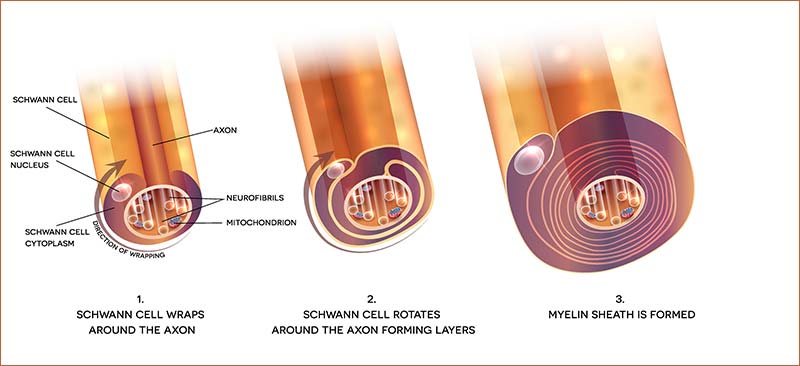
A high concentration of DHA in the neuronal membrane improves neuronal processes such as:
- Neuroplasticity: The brain’s ability to create and re-wire connections between neurons (important during learning and after injury).
- Neurogenesis: The growth and development of neurons.
- Neurite Outgrowth: More projections from neurons.
- Synaptogenesis: The formation of new synapses between neurons.
- Membrane Fluidity: Less resistance in the membrane (important for proper functioning).
- Membrane Protein Function: A change in enzyme activities that improves the transmission of visual signals.
These improvements lead to:
- Improved neuron signaling velocity
- Increased neurotransmission2
DHA can also increase blood flow to the brain during thinking because it decreases blood vessel constriction3 and affects gene transcription. Essentially, DHA enhances neurotransmission efficiency.
Addressing Deficient DHA Levels in Athletes
Today’s athletes, even with a solid nutritional foundation, may not perform at their potential because omega-3 intake is a missing link.
Brain plasticity is high during childhood and influenced by many environmental factors (e.g., nutrition). Consequently, DHA deficiency during growth and development causes significant learning and memory setbacks. During early life, omega-3 deficiency, combined with overconsumption of omega-6s (pro-inflammatory PUFAs prevalent in the Western diet), is associated with impaired psychomotor development4, attention, cognition5, and clarity of vision.6,7
Omega-3 intake is a concern in pregnant women in the U.S., especially socioeconomically disadvantaged women who are more likely to have deficiencies that hurt their baby’s future health outcomes. Today’s athletes could’ve easily missed the window of opportunity for optimal brain development because of their mother’s lack of omega-3 during pregnancy and/or poor omega-3 intake during childhood.
Currently, no accepted definition exists regarding optimal omega-3 levels. Given that DHA is the primary fatty acid in the central nervous system (CNS), precise DHA levels aren’t easily obtainable. However, surrogate biomarkers can define DHA status. For example, DHA levels in red blood cells (i.e., erythrocyte) correlate with brain, cardiac and other tissue levels.
For cardiovascular health outcomes, an EPA and DHA blood cell level of less than 8% is detrimental for some populations. Yet, research shows athletes have omega-3 profiles less than 8%. One study found that, among athletes from an NCAA Division I school, 15% had an HS-Omega-3 Index below 4% (considered detrimental) and 84.5% had 4-8%. No student was at 8% or above.
DHA deficiency in athletes shows that sports nutrition needs to be about more than calorie intake, says @OnYourMark_NUTR. Share on XThis data is comparable to the omega-3 intake of individuals in the U.S., and further evidence that Americans don’t consume enough omega-3s.
Sports nutrition has a clear problem—we need to do more than just ensure athletes get calories. We’re missing out on fueling for memory, speed, reaction time, vision, and longevity.
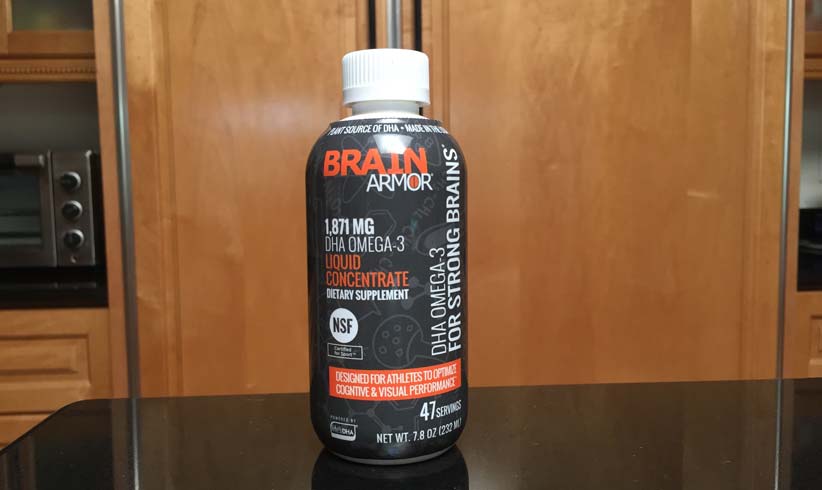
The selection of performance supplements skews toward immediate performance because it’s concrete and tangible. Supplementation for the long-term is more abstract. Fortunately, DHA supplementation is in the athlete’s best interest for immediate performance and long-term health.
DHA is a first-string player in the supplement game, especially for deficient (and aging) athletes, because it stimulates brain and eye health at the molecular level.
Stimulating Brain Health
Forgetting people’s names and where you placed your keys is natural and not a major concern. However, decrements in reaction time and the inability to think clearly hurt brain health— and giving athletes the right amount of carbohydrates won’t solve the problem.
DHA is one of the most important pillars to maintain and strengthen our brain health, and it supports functions such as:
- Thinking
- Remembering
- Learning
- Planning
- Concentrating
As we age, it becomes more challenging to maintain a clear, active mind. All stressors endured throughout an athlete’s career (e.g., head trauma, chronic inflammation, poor nutrition) accelerate this challenge.
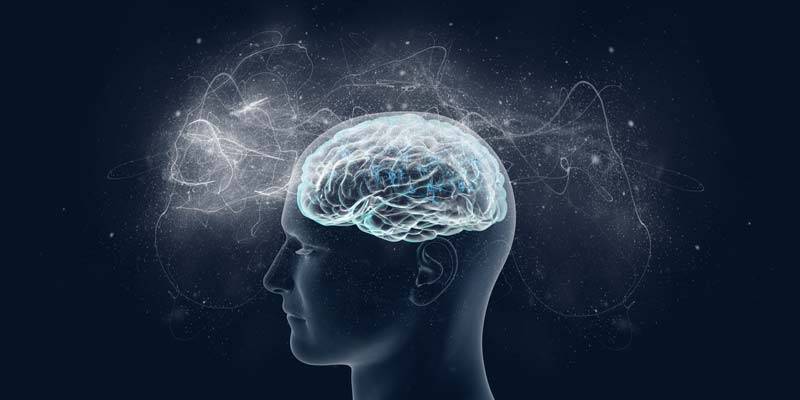
DHA strengthens the central mission of the brain to:
- React to challenges (ergogenic aid)
- Fight disease (preventative and healing factor)
Fortunately, coaches can quantify the effects of DHA supplementation more directly using reaction time and cognition.
Memory and Reaction Time
Enhancing memory through nutrition is not just for an aging population facing the inevitable cognitive decline. Working memory is critical to make quick and efficient decisions in team-sport situations where there are constraints, such as time pressure and processing many team members and opponents—like Tom Brady searching for an open receiver on a final play.
Time is of the essence in most sports: How quickly an athlete can assess a situation, make a decision, and carry out a behavior.
Reaction time involves perception (detection and comprehension) in the visual field, mental processing of the perception, a decision for the reaction, and time for the physical response. In Formula 1 racing, seconds—or reaction time—can determine the difference between first and second place.
#DHAsupplementation improves athlete performance and long-term health, says @OnYourMark_NUTR. Share on XYoung, healthy adults with a diet low in DHA may improve memory and reaction time simply by increasing their DHA intake.
A study reported that DHA supplementation of 1.16 g/day for six months improved reaction times of episodic (i.e., memory of an event) and working memory in healthy adults between 18 and 45 years old following a diet low in DHA. A series of computerized cognitive tests showed higher accuracy for episodic memory in women. Men showed greater benefit for reaction times (increased by 20%) from working memory, finishing working memory activities 223 milliseconds faster. Practically speaking, the average human reaction time is 250 milliseconds.

DHA supplementation increased erythrocyte DHA levels to 2.6% of total fatty acids. High DHA concentration in parts of the brain involved in memory and attention may have contributed to the reaction time improvement.8,9 An increase in membrane fluidity (less resistance) and lower pro-inflammatory signaling molecules may have contributed to improved cognition.
Even with athletes that already have fast reaction times, there’s still room for improvement.
A study investigated the effects of 3.5 g/day of DHA in elite female soccer players over four weeks of training on processes involved with perceptual-motor efficiency (i.e., how sensory information is obtained, understood, and reacted to), such as complex reaction time, precision, and efficiency. Complex (or choice) reaction time is when there is more than one stimulus and multiple potential responses (e.g., a point guard determining who to pass the ball to), whereas a simple reaction time is a response to one stimulus (e.g., the reaction to the shotgun start of a sprint).
Using a multiple reaction times test, DHA supplementation led to significant improvements in complex reaction time and complex reaction efficiency (time and accuracy)—resulting in a significant improvement in neuromotor function. Improving complex reaction efficiency powers athletes to react and perform better with the technical and tactile aspects of sport.
Consider the brain science of basketball. There’s tactile skill of hands and fingers in handling, dribbling, passing, and shooting, which combine with physical training and the player’s individual memory and recall of the shot.
Imagine game-winning shots missed by Lebron James. How many times has Lebron said: “That was supposed to go in.”? His psychological efficacy was there, but missed shots could be at the expense of reduced complex reaction efficiency.
Every competition is the athlete’s complex testing environment. Fatigue during a game (when perceptual-motor efficiency typically decreases) likely lowers complex reaction efficiency. Improving perceptual-motor processes can result in lower complex reaction time and higher accuracy.
Head Trauma
The silent concussion (sometimes referred to as mild traumatic brain injury, mTBI, even though they are not the same) epidemic plagues collision sports. During a concussion, the brain hits against the skull. The primary injury is the repetitive exposure to impact forces, and mechanical injury stretches and rotates the brain nerve fibers.
Neurotransmitters are released, but become chaotic, and neurons are halted, leading to them becoming unable to conduct nerve impulses. The neurons are alive, but they can no longer function properly. This affects the things the neurons control (e.g., memory, speech).
Over time, this leads to secondary injury, which is the increase in:
- Oxidative stress (neuroinflammation)
- Neurodegeneration (breakdown of proteins, DNA, and lipids)
This neurodegeneration is associated with long-term cognitive deficits:
- Impaired memory and attention
- Emotional instability
- Changes in executive function (i.e., the ability to get things done)
- Sensorimotor deficits
Neuroprotection for Current Football Players
The high exposure to head trauma in American football calls for an increase in the resilience of a football player’s brain for neuroprotection.
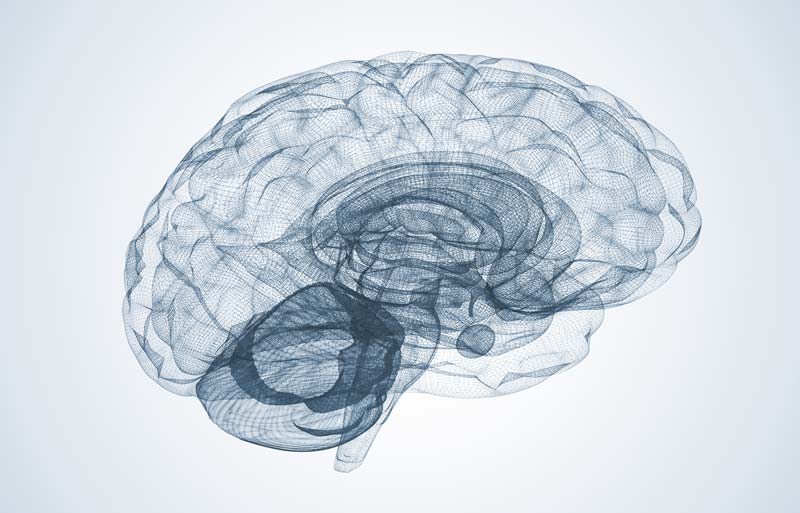
DHA promotes neuroplasticity (i.e., repair, regenerate, and reconnect) and may serve as a nutraceutical that lends neuroprotective abilities.
DHA neuroprotection comes from its effect on axonal injury, which is central to head trauma consequences. The first study to support this investigated DHA supplementation using the Texas Christian University football team, and its effect on the amount of neurofilament-light (NF-L), a biomarker for head trauma found in cerebral spinal fluid, over the course of a season. Players received DHA supplementation (approximately five days per week at 2g, 4g, or 6g per day) or a placebo. Findings following the season included:
- Double NF-L levels in starters compared to non-starters.
- An increase in NF-L levels in players who did not suffer from diagnosable concussions (suggesting sub-concussive hits are a major factor).
- NF-L levels increased an average of 36% in players taking DHA compared to an average increase of 120% in those taking a placebo.
DHA is not just for recovery from acute head trauma, but also for the potential avoidance or delay of the progressive cumulative effects of brain injuries. Chronic neuroinflammation can continue for months to years following moderate and severe traumatic brain injury (TBI).10,11,12,13 Each time a player has head trauma, they’re predisposed to a greater inflammatory reaction with the next trauma.
For the aging athlete, TBI is a major cause of disability (e.g., progressive neurological dysfunction).
Neuroprotective Medication for Retired Football Players
Many retired football players experience unhealthy brain aging. Chronic inflammation and neurodegeneration may be the etiology of neurodegenerative disease. DHA may serve as post-injury neuroprotective medication, especially since former players are at an increased risk for neurodegenerative disease, such as Alzheimer’s Disease (AD) and the less common, chronic traumatic encephalopathy (CTE). A study found neurodegenerative mortality in 3,439 retired NFL players was three times higher than in the general U.S. population and four times higher for Alzheimer’s.
#DHAsupplementation has promise in the fight against former football players’ increased AD risks, says @OnYourMark_NUTR. Share on XAD is neurodegenerative dementia with early impairment of memory and progressive loss of other cognitive functions. Just one TBI may contribute to an AD-like neuropathology. The axonal injury that comes from TBI leads to a buildup of plaques called amyloid-beta—a major characteristic of AD.
DHA is suggested as a preventative nutritional strategy in the prevention and treatment of AD. Given the links between AD and TBI, DHA supplementation has promise for fighting back against a former football player’s greatly increased risk for AD.
Neurotrophins
Brain-derived neurotrophic factor (BDNF) is a neurotrophin (protein) critical for synaptic plasticity because it helps communication between neurons, neuron excitement, and the maintenance of learning, thinking, and memory.14,15 Essentially, BDNF is the quarterback for maintaining the molecular foundation of cognitive function.

Oxidative stress from head trauma lowers BDNF. This hurts synaptic plasticity because oxidative damage changes cell membrane fluidity, breaks down the membrane, and results in poor neurotransmitter signaling. The faulty neurotransmitter signaling is part of the pathophysiology of mood disorders (e.g., depression) and potential suicidal behavior.
DHA normalizes BDNF levels, which serves as a healing effect following brain injury.16,17
Note that BDNF manifests in the part of the brain (hippocampus) heavily associated with processing cognitive function.18 Improving cognitive function in response to trauma requires delaying the deterioration of the hippocampus, which DHA supplementation of 2g per day for one year has shown to help in those with mild cognitive impairment.
Certain blood biomarkers can be monitored to evaluate potential health consequences for athletes experiencing repetitive head trauma. Prolonged exposure to inflammatory markers is potentially harmful as it shifts the role of these molecules from neuroprotection to neuroinflammation.
Tumor necrosis factor- (TNF-) is an early responder to CNS damage. TNF- can be neuroprotective or neurotoxic. It’s a biomarker to monitor even though the time course toward toxicity is unknown. C-reactive protein levels following injury are associated with post-concussive syndrome symptoms. Coated platelet (i.e., proteins with high potential to promote blood clotting) levels can be elevated for up to nine years following mTBI.
Essentially, biomarkers can suggest any ongoing brain (e.g., BDNF) and inflammatory (e.g., TNF-) injury after repetitive, mild head trauma.
Improving Eye Health
Athletes need a sharp eye, as strong vision (typically taken for granted) helps process information coming at them quickly. Seeing better and reacting faster both rely on visual processing speed to the brain.
High concentrations of DHA occur in cell membranes of the retina and it’s critical to regenerating the visual pigment rhodopsin, which converts light into a chemical signal that creates visual images in the brain (i.e., improved transmission of visual signals). For example, reaction time to make a save in hockey relies on the speed of the neural signal and decision process. Aside from a learned reaction, goaltenders can improve their skill in blocking shots by improving neuronal speed in the eyes.
Furthermore, a new study first reported the molecular mechanisms behind DHA and visual function. Lower amounts of DHA in the retina result in abnormal discs in photoreceptor cells so DHA helps maintain photoreceptor cell disc shape.
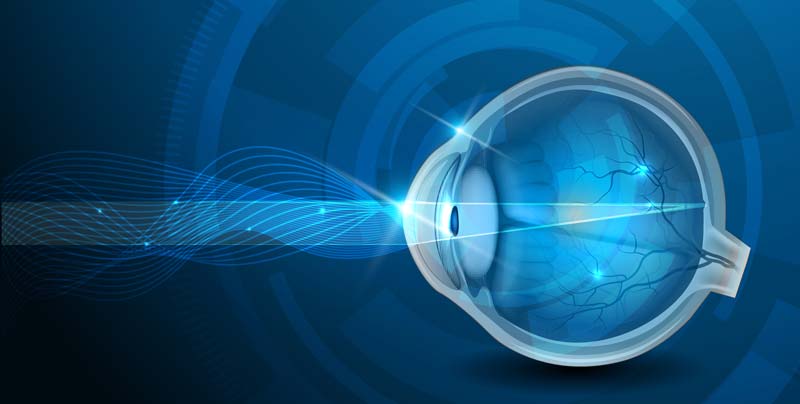
It’s hard for athletes to maintain retinal function when they compete under challenging light conditions and/or look into the sun. DHA may reduce or fight chronic light exposure and oxidative stress in the eyes.
The difference between a home run and a foul ball may be nutritionally fueled vision, says @OnYourMark_NUTR. Share on XDHA can also help combat dry eyes. A study found that 175 mg DHA taken daily for three months improved symptoms of dry eyes in healthy people. DHA may stimulate tear production to alleviate dry eyes, which is promising for athletes training in dry, windy conditions. The difference between a home run and a foul ball may be nutritionally fueled vision.
Fuel with DHA
DHA supplementation rewires the athlete so they can react quicker, increases visual processing speed, and serves as a neuroprotective shield for future brain, eye, and cardiovascular health. DHA fuels neurons that lead to functional performance benefits that can’t be achieved simply from physical training and carbohydrate loading. Implementing DHA supplementation is safe, easy, and reliable. It supports the brain and eye architecture needed to react within a short time frame and protects athletes against stress-related brain consequences.
Since you’re here…
…we have a small favor to ask. More people are reading SimpliFaster than ever, and each week we bring you compelling content from coaches, sport scientists, and physiotherapists who are devoted to building better athletes. Please take a moment to share the articles on social media, engage the authors with questions and comments below, and link to articles when appropriate if you have a blog or participate on forums of related topics. — SF
References
- Schmitt JAJ, Benton D, & Kallus KW. General methodological considerations for the assessment of nutritional influences on human cognitive functions. Eur J Nutr. 2005; 44:459-64.
- Cunnane SC, Plourde M, Pifferi F, Begin M, Feart C, & Barberger-Gateau P. Fish, docosahexaenoic acid and Alzheimer’s disease. Prog Lipid Res. 2009; 48:239-256.
- Jackson PA, Reay JL, Scholey AB, & Kennedy DO. DHA-rich oil modulates the cerebral haemodynamic response to cognitive tasks in healthy young adults: a near IR spectroscopy pilot study. Br J Nutr. 2012; 107:1093-1098.
- Burgess JR, Stevens L, Zhang W, & Peck L. Long-chain polyunsaturated fatty acids in children with attention-deficit hyperactivity disorder. Am J Clin Nutr. 2000; 71:327S-330S.
- Helland IB, Smith, L, Saarem K, Saugstad OD, & Drevon CA. Maternal supplementation with very-long-chain n-3 fatty acids during pregnancy and lactation augments children’s IQ at 4 years of age. Pediatr. 2003; 111:e39-e44.
- Innis SM & Friesen RW. Essential n-3 fatty acids in pregnant women and early visual acuity maturation in term infants. Am J Clin Nutr. 2008; 87:548-557.
- Sangiovanni JP, Parra-Cabrera S, Colditz GA, Berkey CS, & Dwyer JT. Meta-analysis of dietary essential fatty acids and long-chain polyunsaturated fatty acids as they relate to visual resolution acuity in health preterm infants. Pediatr. 2000; 105:1292-1298.
- Chung WL, Chen JJ, & Su HM. Fish oil supplementation of control and (n23) fatty acid-deficient male rats enhances reference and working memory performance and increases brain regional docosahexaenoic acid levels. J Nutr. 2008; 138:1165-71.
- Gamoh S, Hashimoto M, Sugioka K, Hossain MS, Hata N, Misawa Y, & Masumura S. Chronic administration of docosahexaenoic acid improves reference memory-related learning ability in young rats. Neuroscience. 1999; 93:237-241.
- Gentleman SM, Leclercq PD, Moyes L, Graham DI, Smith C, & Griffin WS, et al. Long-term intracerebral inflammatory response after traumatic brain injury. Forensic Sci Int. 2004; 146(2-3):97-104.
- Johnson VE, Stewart JE, Begbie FD, Trojanowski JQ, Smith DH, & Stewart W. Inflammation and white matter degeneration persist for years after a single traumatic brain injury. Brain. 2013; 136(Pt 1): 28-42.
- Smith C, Gentleman SM, Leclercq PD, Murray LS, Griffin WS, & Graham DI, et al. The neuroinflammatory response in humans after traumatic brain injury. Neuropathol Appl Neurobiol. 2013; 39(6): 654-666.
- Ramlackhansingh AF, Brooks DJ, Greenwood RJ, Bose SK, Turkheimer FE, Kinnunen KM, et al. Inflammation after trauma: microglial activation and traumatic brain injury. Ann Neurol. 201; 70(3):374-383.
- Zuccato C & Cattaneo E. Brain-derived neurotrophic factor in neurodegenerative diseases. Nat Rev Neurol. 2009; 5:311-322.
- Egan MF, Kojima M, Callicott JH, Goldberg TE, Kolachana BS, Bertolino A, Zaitsev E, Gold B, Goldman D, Dean M, Lu B, & Weinberger DR. The BDNF val66met polymorphism affects activity-dependent secretion of BDNF and human memory and hippocampal function. Cell. 2003; 112:257-269.
- Wu A, Ying Z, & Gomez-Pinilla F. Omega-3 fatty acids supplementation restores mechanisms that maintain brain homeostasis in traumatic brain injury. J Neurotrauma. 2007; 24:1587-1595.
- Wu A, Ying Z, & Gomez-Pinilla F. Docosahexaenoic acid dietary supplementation enhances the effects of exercise on synaptic plasticity and cognition. Neuroscience. 2008; 155:751-759.
- Kelly A, Laroche S, & Davis S. Activation of mitogen-activated protein kinase/extracellular signal-regulated kinase in hippocampal circuitry is required for consolidation and reconsolidation of recognition memory. J Neurosci. 2003; 23:5354-5360.


Since I was recently diagnosed with hardening of the arteries of the brain, making balance while walking a challenge I have been taking Brain Armour to try to delay progression and also to help my eyes which are very myopic and at risk for retinal detachment. With these two problems plus my age of 78 years, I felt large amounts of DHA could be of significant help.